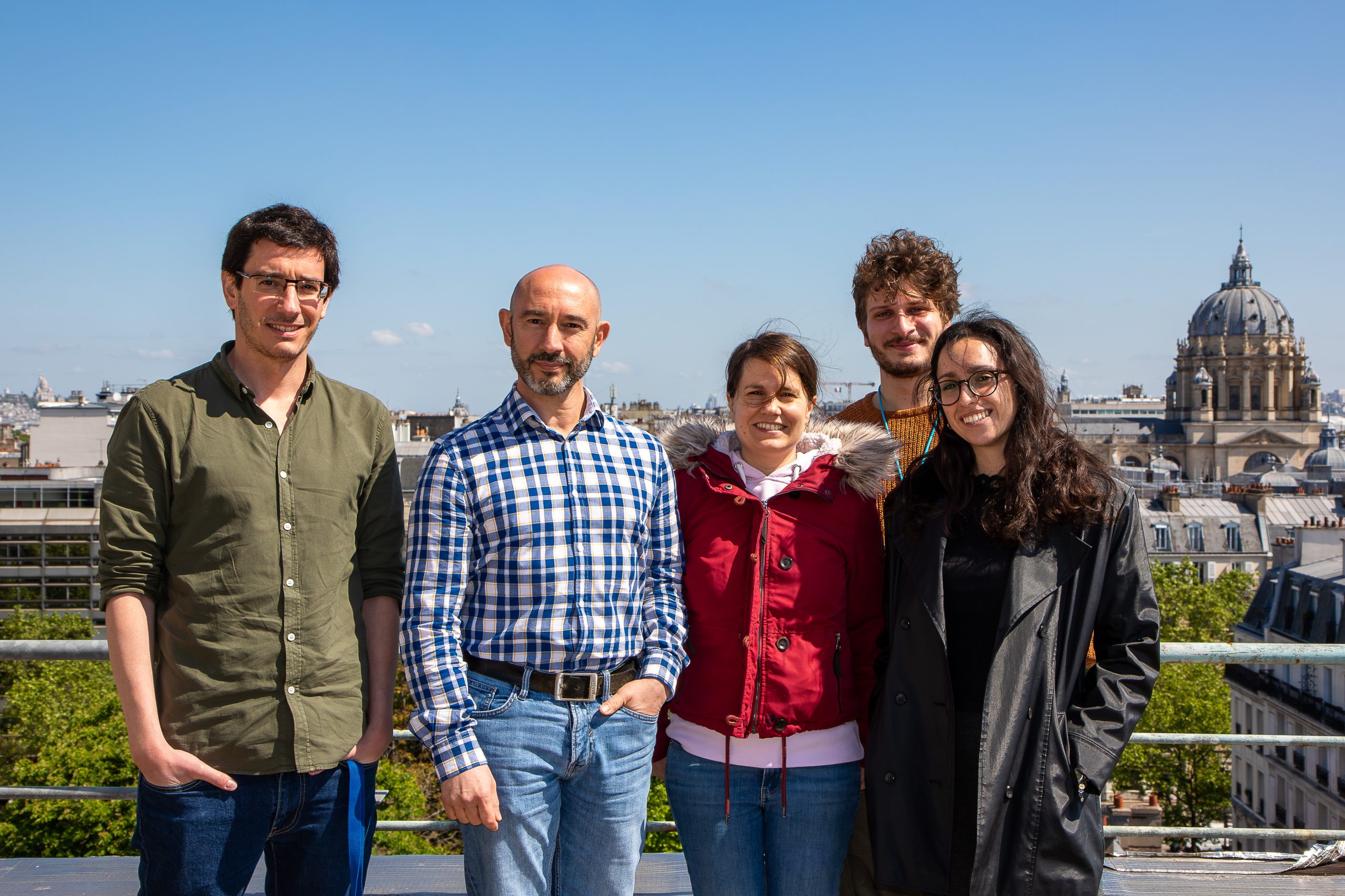Lab meeting with the Zalc Lab
Posted by the Node, on 25 May 2023
Lab website: Cell fate, plasticity and reprogramming | Institut Cochin
1. Where is the lab?
The lab is located in the Cochin Institute (14th arrondissement of Paris), in between la Butte aux Cailles and Montparnasse.
2. Research summary
Antoine: We use the cranial neural crest as a model to understand how cell fate decision and cell plasticity are regulated during embryogenesis. This population presents a remarkable differentiation potential as it gives rise to the entire peripheral nervous system and to most of the craniofacial skeleton. We are also testing whether cranial neural crest plasticity could be harnessed to enhance postnatal bone regeneration.

3. Can you give us a lab roll call, with a sentence including what each person works on and career stage
Jean-Christophe: Engineer – trust in sphere, spend money the PI collect, love, and hate expectation
Saverio: Master2 student – trying to understand neural crest regionalization: cares for his many little spheres, gets happy when they behave nicely, starts shouting in Italian when they do random stuff just to annoy him.
Martina: Master2 student – trying to not get crazy when she obtains just 5 ng/ul of RNA from 150 spheres, in love with multichannel pipettes
Laura: Postdoc – juggles with differentiating spheres, sees the light at the scope, pipets hard at the bench, wants to understand the tuning of Oct4 for cell plasticity, is driven by curiosity
Antoine: PI – does the paperwork, have multiple meetings every day, jumps and/or dance when new data arrive
4. Favourite technique, and why?
Antoine: Depends on the question we are asking.
If I had to choose it will be genetic lineage tracing. The embryo being the best teacher, this technic provides a clear understanding of the decision made by the cells, and it generates great images.
Then RNA in situ hybridization, works beautifully on whole embryo or sections. Allows to the questions what are cells asking before, during and after they made a choice.
5. Apart from your own research, what are you most excited about in developmental and stem cell biology
Antoine: We are reaching a stage where we are done naming things. We are now able to understand development with equations. The advances of single cell omics will soon allow us to reconstruct an entire embryo in sillico. With this, it will be possible to predict how an environmental or genetic perturbation affects development. This will also allow us to generate several scenarios to rescue the defect, which can be much later than when the problem occurs.
I’m also really excited by the rapid progress made with organoïds. I was skeptical at first, but this is becoming an excellent tool to study basic cell behavior and logic.
6. How do you approach managing your group and all the different tasks required in your job?
Antoine: This is a learning process… I’m a strong believer that science must be fun! We spend so much time and effort doing it we should at least enjoy the process. For it to be fun, this implies scientific rigor, work ethics, good technical skills and simply being humane.
I’m still learning about the different task required by the job! Using the one thing I learnt during my PhD and postdoc which is learning how to learn. Thankfully, I have greats colleagues in the Institute that can help with this!
7. What is the best thing about where you work?
Jean-Christophe: Multiplicity of help you can hope and offer.
Saverio: Everything in the lab is brand new so every little step feels like a big achievement!
Martina: There is always chocolate!
Laura: The Institute is included in the Université Paris-city network which gives access to all exciting seminars occurring in the network.
Antoine: The Cochin Institute is multidisciplinary which means I learn a lot about various topics which stimulates creativity and open the way to great collaborations on various topics
8. What’s there to do outside of the lab?
Jean-Christophe: Why do you want to do things outside of the lab? Are you not happy here?
Saverio: If you work in research, try climbing. You will meet so many colleagues that you will feel like you never left the lab. Bring your friends!
Martina: Many sunsets along the Seine with a beer.
Laura: We are in Paris, a lot of culture, art, good coffee, much more.
Antoine: Paris is outside the lab, there’s plenty to do! I take care of my kids, which is a second job on itself, and spend time with my family. When I have time, I try to keep doing photography, keeping an eye and the dynamic Parisian Street Art scene.
Browse through other ‘Lab meeting’ posts featuring developmental and stem cell biology labs around the world.


 (3 votes)
(3 votes)